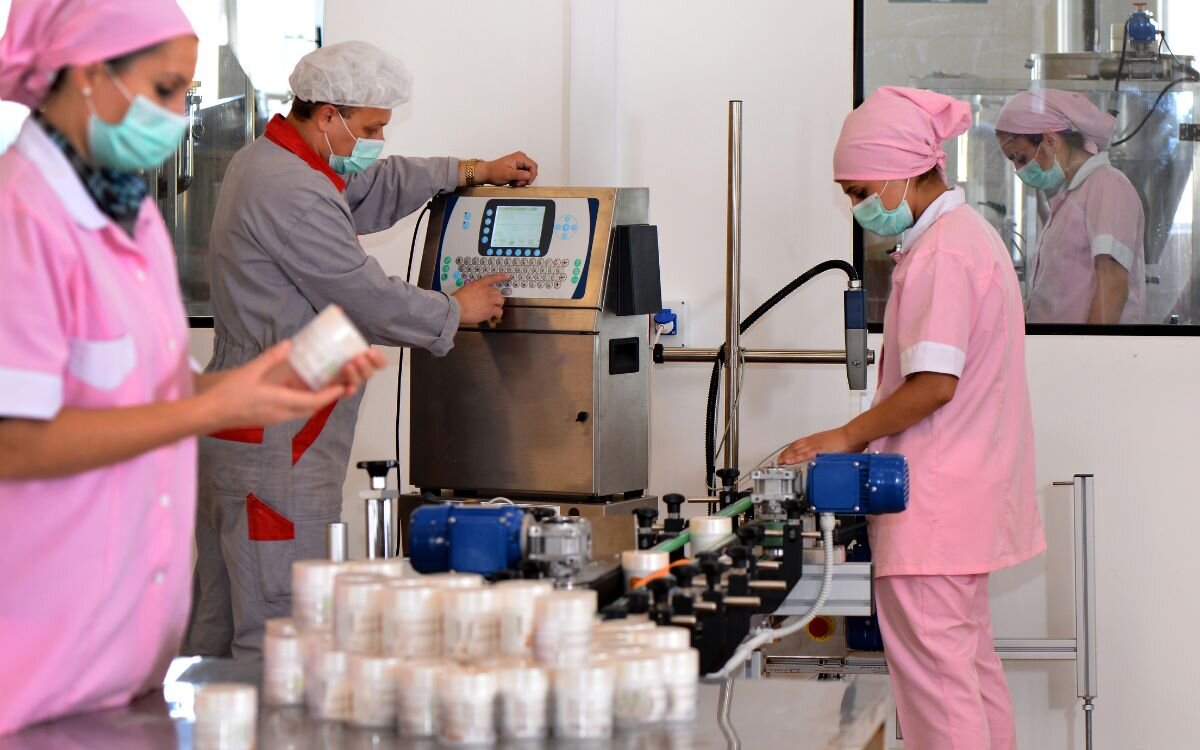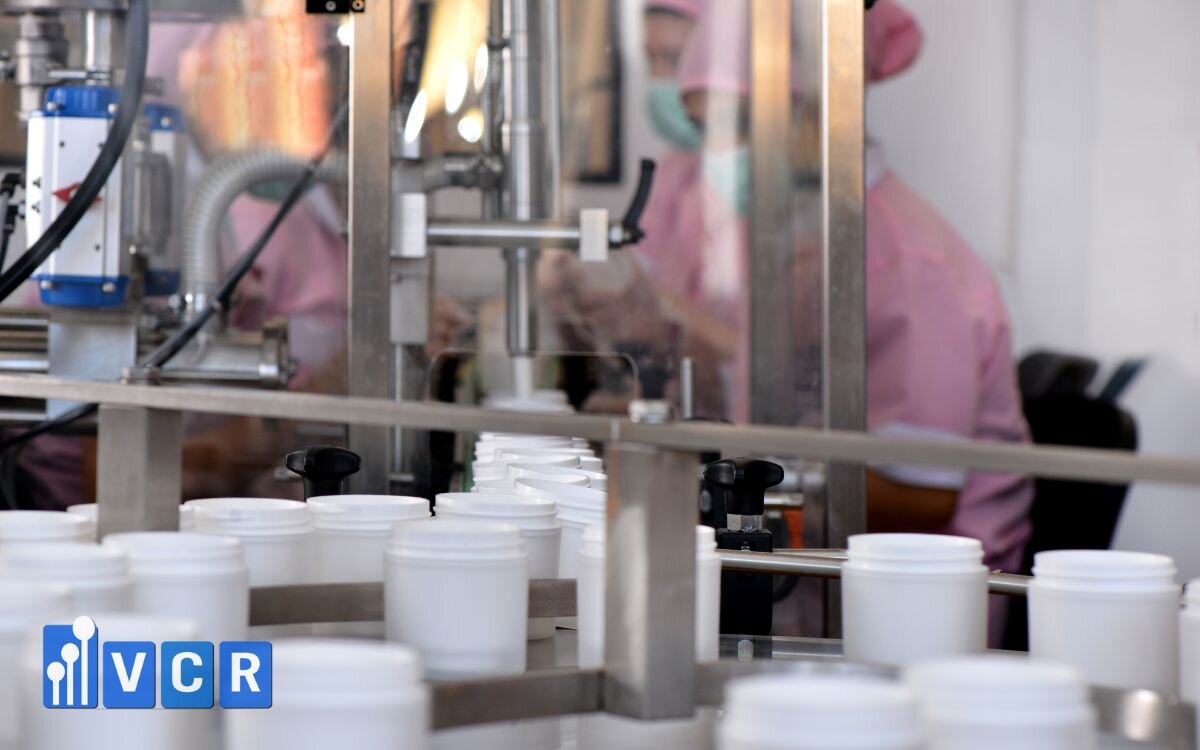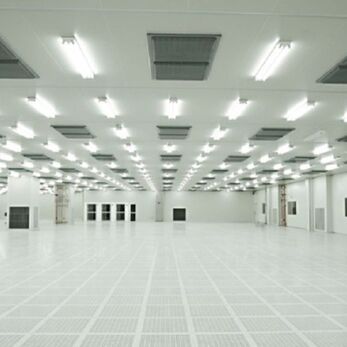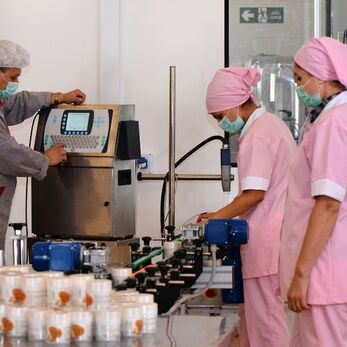- 1. The booming cosmetics industry - but not everyone is ready for cleanrooms
- 2. 7 critical mistakes when investing in cleanrooms for cosmetic factories
- 3. Mistakes - Consequences - Solutions in Building Cosmetic Cleanrooms
- 4. Frequently Asked Questions About Cosmetic Cleanrooms
- 5. Are you planning to build a cosmetic cleanroom?
1. The booming cosmetics industry - but not everyone is ready for cleanrooms
Vietnam's cosmetics market is experiencing strong growth driven by rising beauty demands, the trend of private label production, and increasing export opportunities. However, in order for cosmetic products to be legally distributed and competitive, factories must comply with standards such as GMP (Good Manufacturing Practices) or ISO 22716.

Among these requirements, the cleanroom is the core facility where critical processes like filling, packaging, and quality control take place. These areas must be strictly controlled for microorganisms, dust, temperature, and humidity. Even small deviations in design or operation can lead to:
- Contaminated products and rejected batches
- Failure to pass inspection by the Ministry of Health
- Ineligibility for GMP/ISO certification
- Costly investment losses and delays in market launch
In reality, many investors lack experience or choose the wrong cleanroom contractor - leading to a series of costly mistakes that could have been avoided from the outset.
2. 7 critical mistakes when investing in cleanrooms for cosmetic factories
Below are common mistakes many cosmetic businesses - especially SMEs - make when building cleanrooms, resulting in delays, extra costs, and failure to meet regulatory standards:
Mistake 1: Not identifying the correct standard to follow
Many confuse GMP, cGMP, and ISO 22716.
Lack of clarity leads to incorrect design and configurations.
Consequence: Failed inspections, requiring redesign or reconstruction.
Recommendation: Identify your export goals and target market early to select the correct regulatory framework.
Mistake 2: Poor layout planning not based on the production flow
Improper layout increases the risk of cross-contamination.
Example: The filling area is placed too close to the raw material or finished goods storage.
Solution: Design a unidirectional workflow with clearly separated zones (raw material → filling → packaging → storage).
Mistake 3: Lack of buffer zones and airlocks at gowning areas
Some facilities only have one gowning room, which cannot effectively control particles or microbes.
No interlock system means both doors can open simultaneously, causing pressure loss.
Solution: Design at least 3 gowning rooms (dirty → intermediate → clean), and use interlock door systems to control entry flow.

Mistake 4: Choosing the wrong cleanroom equipment
Using a Pass Box without UV light or HEPA filters increases contamination risks.
Using an FFU with incorrect filter grade or insufficient airflow means failing to meet ISO cleanroom classification.
Mistake 5: Inadequate control of temperature, humidity, and pressure
Some cosmetic products (like serums or creams) are highly sensitive to environmental conditions.
Without sensors or proper HVAC systems, product quality may be compromised.
Solution:
- Install sensors for differential pressure, temperature, and humidity
- Use specialized air conditioning integrated with real-time monitoring systems
Mistake 6: Lack of GMP training for staff
Operators are unfamiliar with gowning procedures and clean/dirty zone separation.
No clear SOPs lead to procedural errors and contamination.
Recommendation:
- Develop detailed SOPs for each step
- Conduct regular training sessions and practical assessments
Mistake 7: Choosing a contractor without cosmetic cleanroom experience
Some builders apply standards for pharmaceuticals or food, which are not optimized for cosmetic manufacturing.
Result: Wrong materials, incorrect equipment, multiple costly revisions, and failed audits.
Solution: Work with contractors who specialize in cosmetic cleanrooms and understand ISO 22716, GMP, and the unique challenges of cosmetics (e.g., odor, microbiological risk, humidity).
3. Mistakes - Consequences - Solutions in Building Cosmetic Cleanrooms
|
Common Mistake |
Serious Consequence |
Effective Solution |
|
Choosing the wrong standard (GMP, ISO 22716, etc.) |
Product not approved for circulation |
Seek consultation from a team specializing in cosmetic GMP |
|
Improper design of production flow |
Risk of cross-contamination by microbes, dust, or chemicals |
Design a unidirectional workflow with clearly separated personnel and material zones |
|
Lack of buffer zones, airlocks, interlock systems |
Loss of environmental control, microbial contamination |
Add airlocks and use interlock systems to control entry/exit |
|
Using incorrect cleanroom equipment |
Fails to meet ISO 7-8 cleanroom classification |
Use compliant equipment with HEPA/UV filters and proper airflow |
|
No control over temperature, humidity, or pressure |
Product degradation, discoloration, or instability |
Install GMP-grade sensors and air conditioning with real-time monitoring |
|
Untrained personnel |
Operational errors, cross-contamination, material loss |
Provide regular training and develop clear SOPs |
|
Hiring an inexperienced contractor |
Construction does not meet standards, fails inspection |
Partner with a contractor experienced in cosmetic cleanroom projects, such as VCR |
4. Frequently Asked Questions About Cosmetic Cleanrooms
- Which standards must a cosmetic cleanroom comply with?
Depending on the scale and target market, cosmetic cleanrooms may need to meet ISO 22716, GMP, or cGMP. ISO 22716 is the most commonly used standard for domestic and export-oriented cosmetic manufacturers. - What areas are required in a compliant cosmetic cleanroom?
A standard cosmetic cleanroom typically includes:
- Gowning rooms (at least 2-3 zones: dirty, intermediate, clean)
- Filling and packaging areas
- Storage for raw materials and finished products
- Airlocks for material transfer
- Environmental control systems for temperature, humidity, and pressure

- Is a Pass Box necessary in cosmetic cleanrooms?
Yes. Pass Boxes allow the transfer of materials between rooms without opening doors, reducing the risk of microbial cross-contamination and maintaining pressure stability. For cosmetics, UV or HEPA-equipped Pass Boxes are recommended. - How do I know which equipment is suitable for each area?
Each functional area has specific requirements:
- Filling area: use FFUs with H13-H14 grade filters
- Packaging area: requires clean lighting and dust removal
- Transfer areas: use Pass Boxes and interlocks
It is best to consult with cleanroom contractors specializing in cosmetics, such as VCR, to choose the right equipment and optimize costs.
- Why do some factories fail audits even after building a cleanroom?
Common reasons include:
- Choosing the wrong standard (e.g., using GMP for pharmaceuticals instead of ISO 22716)
- Poor design not based on unidirectional flow
- Using non-compliant equipment
- Lack of GMP training for staff
Even with significant investment, failing to get proper guidance from the beginning can lead to failed audits.
5. Are you planning to build a cosmetic cleanroom?
Don't let early mistakes cost you money, delay your project, or cause audit failures. Let VCR’s GMP-certified engineering team guide you from consultation to construction, ensuring compliance with ISO 22716 and alignment with actual production needs.
- Free consultation for layout and equipment configuration
- Optimized layout suggestions based on your production process
- Quotation for compliant equipment available in stock
Contact us today:
Hotline: 090.123.9008
Email: [email protected]
Website: https://phongsachmypham.com/
Diep VCR
Vietnam Cleanroom (VCR) là một doanh nghiệp hàng đầu tại Việt Nam chuyên cung cấp thiết bị và giải pháp phòng sạch. Với hơn 10 năm kinh nghiệm phục vụ các dự án phòng sạch đạt tiêu chuẩn GMP, VCR tự hào mang đến các thiết bị kỹ thuật cao như: đồng hồ chênh áp, khóa liên động, đèn phòng sạch, Pass Box, FFU (Fan Filter Unit), buồng cân, HEPA Box, Air Shower, cửa thép phòng sạch, tủ cách ly (ISOLATOR), và nhiều loại phụ kiện chuyên dụng khác
Không chỉ là nhà cung cấp thiết bị, VCR còn là đơn vị phân phối độc quyền các sản phẩm từ các thương hiệu quốc tế như LENGE và BLOCK Technical, đồng thời cung cấp các giải pháp phòng sạch toàn diện cho các lĩnh vực như dược phẩm, điện tử, y tế, thực phẩm và mỹ phẩm. VCR có đội ngũ chuyên gia giàu kinh nghiệm, kiến thức chuyên sâu về phòng sạch, hỗ trợ tư vấn về tiêu chuẩn, thiết kế, thi công và vận hành phòng sạch theo chuẩn ISO, GMP, HACCP, ISO 14644
VCR hướng đến trở thành thương hiệu quốc dân trong ngành phòng sạch, với mạng lưới cung ứng rộng khắp, VCR có các văn phòng tại Hà Nội, TP. HCM, đáp ứng mọi yêu cầu từ xây dựng đến nâng cấp môi trường sản xuất đạt chuẩn
Email: [email protected]
Điện thoại: (+84) 901239008
Địa chỉ:
VP Hà Nội: 9/675 Lạc Long Quân, P. Xuân La, Q. Tây Hồ, TP. Hà Nội
VP Hồ Chí Minh: 15/42 Phan Huy Ích, P.15, Q. Tân Bình, TP.HCM
Hãy liên hệ với VCR để tìm hiểu thêm về lĩnh vực phòng sạch hiệu quả nhất nhé!





